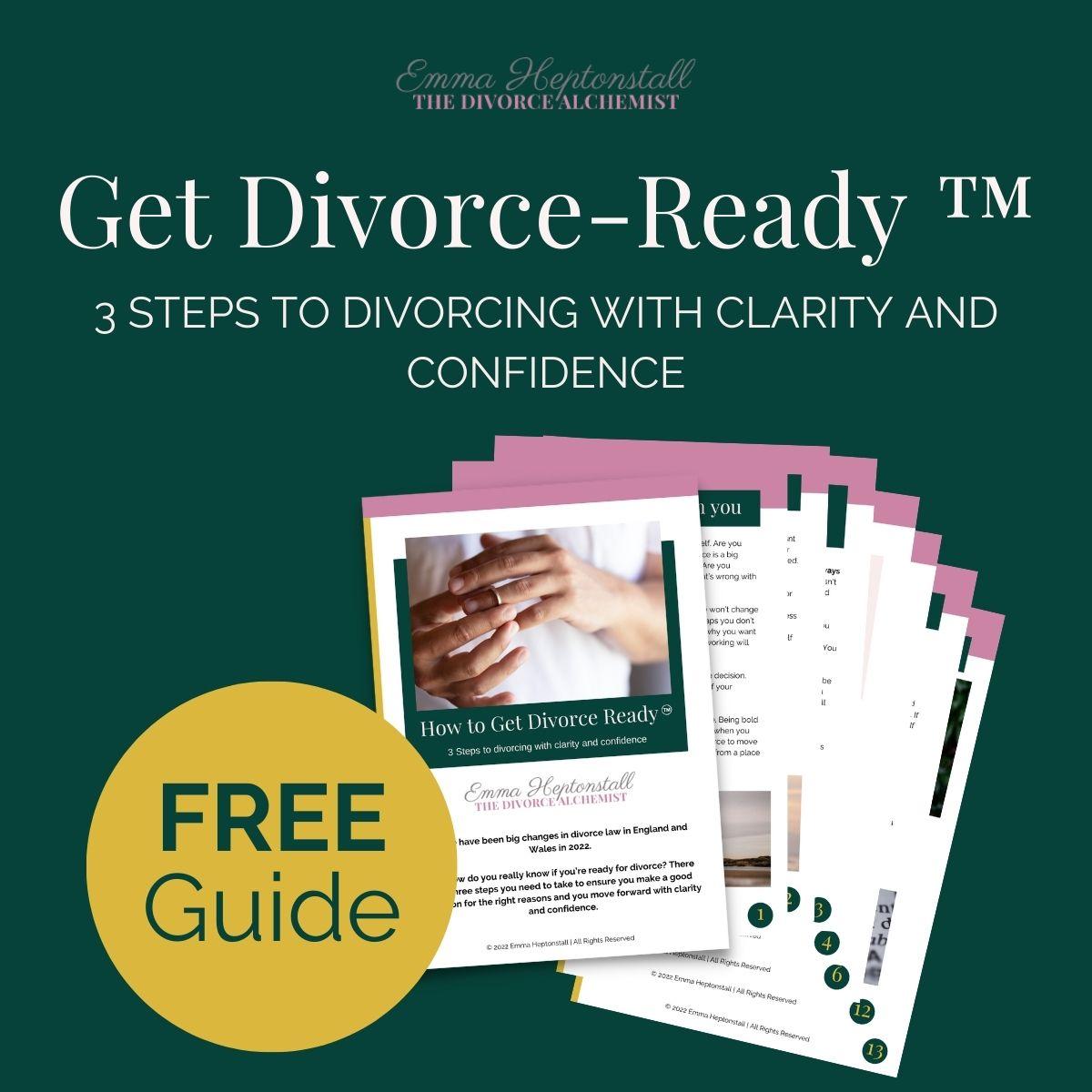Last time on the blog I talked about the DARVO: a technique used by abusers to manipulate their victims into confusion and self-doubt. DARVO stands for Deny, Attack, Reverse Victim and Offender. You can read all about what it is, and how it shows up in divorce, here. This time, we’re going to look at what to do when you’re a victim of DARVO in divorce.
1. Regulate your nervous system
Being a victim of DARVO moves your nervous system into hyper or hypo arousal. In hyperarousal you’re in emotional overwhelm – panic is in the driving seat and you can’t think straight. In hypoarousal, you are detached from the issues at hand, and just want to make it go away. This might show up as emotional numbness, appeasement (going along with whatever your abuser is saying) and people pleasing. None of these states are going to enable you to advocate for yourself and problem solve effectively.
The good news is, there are ways to encourage your nervous system back to a more balanced, stable place. I’m going to go into these in more detail on the next blog, but for now I want you to remember that these things are about your body. You don’t have to try to convince yourself to calm down, or do any work on your mindset. Simply doing some somatic work – work on changing the state of your body, will help.Here are two techniques you can try instantly:
-
- The body scan. You might be familiar with this if you’ve ever done yoga or meditation. You can do a simple version for yourself, wherever you are. You don’t need to be lying down with your eyes closed! Simply start with your toes, and work through your body, through your feet, legs, torso, up to your arms, shoulders and neck. Tighten then release muscles in each part of your body, working upwards. This will ground you, bringing you back into the present moment, and giving space to reclaim your agency
- Breathing exercises: anything that helps you slow down your breathing and breath deeply from your belly will help you at a physiological level. There are lots of different breathing techniques to try. A simple one is the box breath: breathe in for four counts, hold for four, breathe out for four, rest for four, then repeat.
This system reset is foundational. Ground yourself every time you need to deal with your soon-to-be-ex, without fail. But also make it part of daily life – do some grounding while the kettle is boiling, or while you’re in the car. It will help recalibrate your nervous system.
2.Set and communicate your boundaries
Set boundaries around how your soon-to-be-ex can communicate with you. They will push and break those boundaries, and you need to be aware of that from the outset. This is a power game for them. So get legal involvement if you need to (more on this in a moment). Use a third party app, such as Our Family Wizard for communication, or get a separate phone just to use with them. Automatically divert their email from your inbox into a folder, and then set aside time of your own choosing to look at it. This helps you reclaim your power.
And don’t play the game. Employ the ‘grey rock’ method. Make yourself as unresponsive and uninteresting to them as possible. If you cut off the oxygen supply to their game playing, and don’t give them the reaction they want, they will lose their power.
Remember the BIFF response to communication: stay Brief, Informative (stick to the facts), Friendly (where friendly means polite, rather than over-involved) and Firm (be clear on your boundaries).
3.Keep records
Keeping records when you’re experiencing DARVO in divorce is vital for two important reasons: your sanity, and to hold as evidence for any legal proceedings. DARVO users rely on their victims feeling confused and self-doubting.
One of the most powerful ways to protect yourself from that is to have clear, objective evidence of what happened. Keep all communication in writing, so you have records. If you are threatened, keep a record of what happened, and report it to the police.
Of course, your soon-to-be-ex will dispute your version of events, there’s no getting around that. And the courts won’t want to get involved in arbitration on who did or said what, they will focus on the divorce. But records will help you trust yourself, and if there is a criminal case, they will form evidence for that.
4. Enlist the right support
I can’t say this loudly enough: ensure that any professionals you engage in your divorce are experienced and trained in abuse cases. The usual ‘rules of engagement’ in divorce don’t apply when one of the parties is going all out to manipulate. They will do anything to win, and will always be in the right, in their own eyes.
The risk if you work with untrained and inexperienced professionals is that the effects of DARVO are amplified. Those feelings of ‘maybe it is just me?’ are doubled, because your professional team doesn’t get it, either.
Equally, with any unpaid support from friends or family, be boundaried about who you let into your inner circle. Some people will ‘want what’s best for you’ but be unable to understand. You don’t need to cut these people out, especially if you know they are well meaning, but they don’t need to be your confidantes either.
5. Recognise and break patterns
This isn’t a quick fix, and you will most likely need the help of a trained coach or therapist, but, the very best thing you can do for your future self is to break the pattern. To rebuild your trust in yourself, and recognise where you’ve absorbed or inherited patterns from your past, so you can be aware of them going forward.
My client Patricia was the breadwinner in her family, and had been an accountant for 30 years. She understood money. Yet, when it came to mediation with her husband, she went into freeze mode. She couldn’t answer the questions, and her aggressive husband ran rings around her, pushing narratives to the mediator about how Patricia had been controlling about money in the marriage. Patricia knew this wasn’t true.
Throughout the entire marriage her husband had spent money freely, calling Patricia ‘mean’ if she questioned any of his decisions. Patricia earned the money and her husband controlled what happened to it.
So Patricia came out of that meeting frustrated with herself. What had happened?
This was the subject of our coaching conversation. And, as we explored together, Patricia recognised that she’d been brought up to believe that her opinion wasn’t worth very much. As a child, her parents hadn’t valued her opinion, or considered her very bright. So Patricia had absorbed the message that others knew best in her personal life, even though in her professional life she was at the top of her game.
It was only through unpicking all this, and recognising that she is a competent adult that Patricia was able to start to reset the relationship with herself. Which meant she was able to show up differently in her next mediation session, and represent herself fairly.
This work is so important. And it is so important to do it with someone who is equipped to help you. I am a trauma-informed coach, a former lawyer and mediator, the UK’s only High Conflict Diversion Specialist, and I have over a decade of coaching experience.
I would love to bring all this to support you to navigate your way through divorce your way, with your head held high. It is time for you to start living life on your terms! Book your call today.
About Emma
Emma Heptonstall, the Divorce Alchemist is the author of the Amazon best-selling book How to be a Lady Who Leaves, the Ultimate Guide to Getting Divorce Ready. A former lawyer, Emma is a family mediator and founder of Get Divorce Ready, the online self-study programmes, and the newly released ‘Should I be a Lady Who Leaves?’. For More Information on Should I be a Lady Who Leaves? click here.
Emma has been featured on BBC Radio, The Telegraph, the iPaper and in Marie Claire Magazine. Emma is also the host of The Six Minute Divorce Podcast. To find out more visit www.emmaheptonstall.com





0 Comments